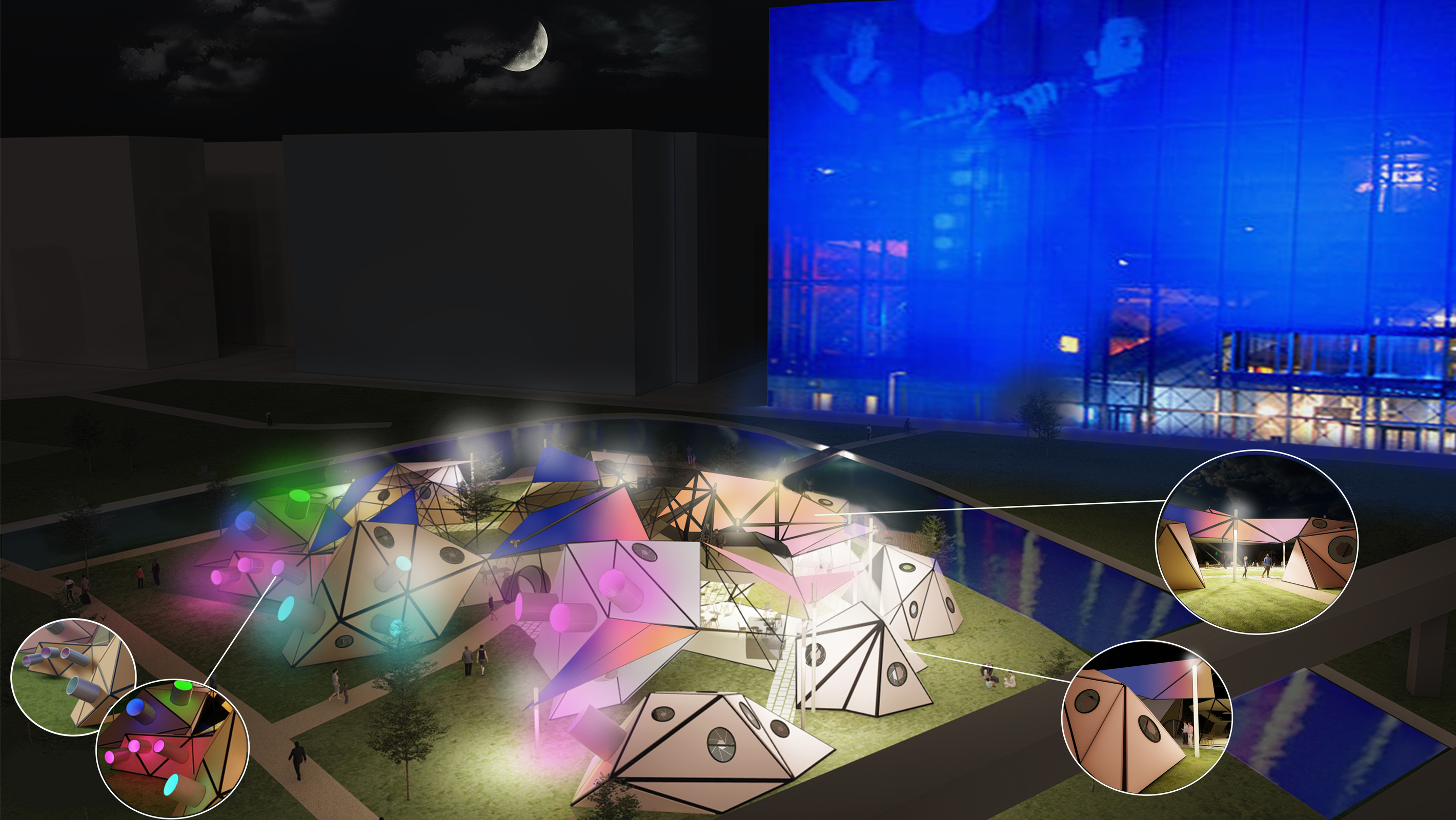HYGGE HUB - EXPERIMENT NO:29

Category
Daylight in buildings - Region 2: Central and Eastern Europe and the Middle East.
Students
Mert Kılıç
Gülnihal Er
Simgenur Karaca
Teacher
Pınar Dinç Kalaycı
Gizem Özkan Üstün
School
Gazi Üniversitesi
Country
Turkey
Download
Download ↓
28 experimental structures were identified in the Ørestad area, an architectural laboratory. The project name has been determined as EXPERIMENT 29. Ørestad is the new residential area located on Amager Island, south of Copenhagen, and is the first public-private partnership planning project in Denmark. On the other hand, Ørestad is an innovative design project that aims to reach sustainable high-level urban values such as new industrial production areas, educational areas, transportation strategies and parking solutions, diversity of recreation areas.It can be suggested to prefer small designs in potential designs that can be applied in this field and to give importance to daily use. Design decisions were made as a result of these analyses.Due to its geographical location, Copenhagen has long nights in winter. As a result, the problem of lack of light is experienced. At night, artificial light spreading from the facade of the Copenhagen DR Concert Hall, located next to the project area, is utilized. However, this huge facade lighting is insufficient to enliven the space. It is aimed to find a solution to the problem of darkness with an experimental design in the Ørestad region, which is a laboratory where different architectural examples can be seen.Hygge is the secret to happiness for Danishes. Many things are called hygge such as enjoying things that make you happy, spending time with your loved ones, inner peace, watching the rain from the window, a warm coffee by candlelight, cooking something in the oven, enjoying a book under a blanket.So, with the concepts brought by this philosophy of life, a program that offers the user the opportunity to relax and socialize is recommended despite the intense pace of the Ørestad region.In the form phase, an amorphous form with surfaces in many directions was determined. This shape allows the mass to take in sunlight and artificial light from different angles at different times of the day. A simple light environment cannot meet the light needs of individuals due to different activities. Sunlight should be private to everyone. Everyone should be able to decide on their own light environment. The light requirement of the space changes according to the event. So, the Experiment:29 offers different control tools for daylight. One of these is the diaphragm, one of the components of the camera, serves to control the intensity of the light reflected from the object while taking a photo. It is a piece consisting of disc-shaped wings. The light intensity is adjusted by opening and closing these wings. The diaphragm mechanism is also similar to our eye pupils.A software has been designed so that the diaphragm openings can be determined easily by the user. The application offers the users a private light experience in the digital environment. The customizable spaces in the design serve for group or individual use. In these areas, the user can determine the openness of the diaphragm wings on the lenses in line with the light requirement of his activity. At the same time, users can create an appointment through the application on the smartphones to access to these masses.Lenses are recommended as another control tool for artificial light and daylight included in the design. Depending on the function, convex or concav lenses are opened on the different angle placed surfaces of the structure. It is asked to show different behaviors by refracting the sunlight as it passes through the lens.A ray of light coming into a lens is refracted twice, as it enters the lens and exits the lens. Lenses that refract rays by collecting are called convex lenses, and lenses that refract by sreading are called concave lenses. In this context, concave lens is used in areas where rich and homogeneous light is desired. Again, concave lens is preferred in areas where more focused (spot) light is preferred.The mass included eaves which charge with daylight and brighten the surroundings when the sun goes down and also as a another light source it has telescope lenses that spread the collected artifical light around them at night.As a material, translucent and opaque ETFE panels which , is a fluorine-based plastic and provides appropriate acoustic environment and insulation, used in the design . It is compared to materials such as glass, it is lighter and provides more light transmission.

































